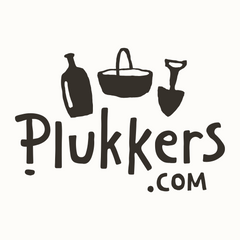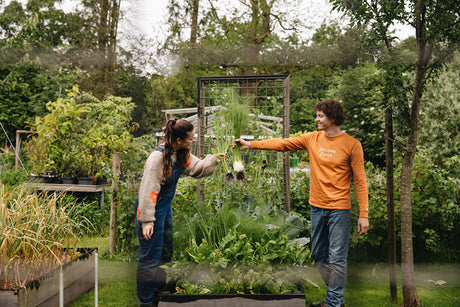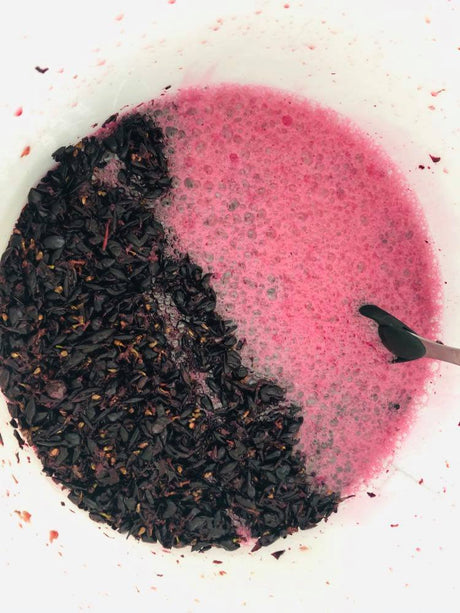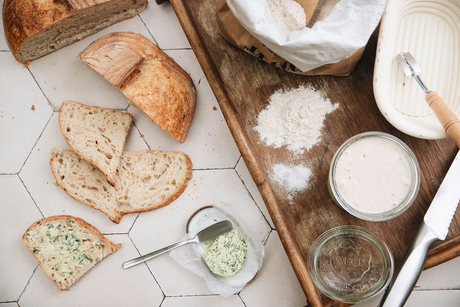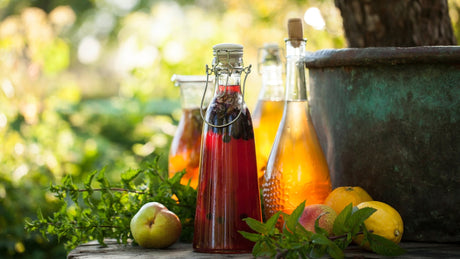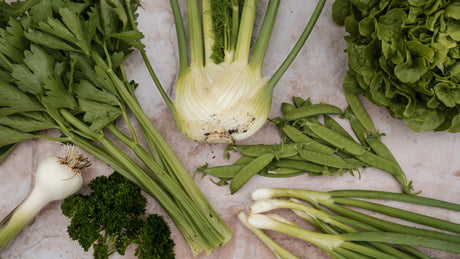Getting started with your indoor vegetable garden
introduction
If you're a vegetable gardening enthusiast and can't wait to start your 2022 growing season, this article might be for you. However, if you're happy with a bit of a break and your pantry and freezer are full of winter goodies, this article might not be for you. I'll discuss the advantages and disadvantages of starting your indoor vegetable garden earlier. I'll also cover how to start earlier and which crops benefit from it. For example: Certain crops benefit from bee pollination in June. But the flowers you sow in your garden to attract bees often only bloom in July or August. Another example: Southern plants or crops with a very long growing season, like peppers , can be harvested as early as June or July if you start earlier. This doesn't work the same way you normally would if you only harvest your peppers from August onwards. In this article, I'll try to outline a plant's needs in a simple way. Outline different needs during the different stages of a plant's growth cycle.
Growing your own vegetables
This site features a detailed crop index for over 50 crops. In addition to sowing depth, planting distances, and good and bad neighbours, it also lists the various crops for each crop. It shows when you can sow, when to transplant if you're not sowing directly, and when you can harvest. The sheets also include logos indicating where you can start growing. Indoors

, under glass

or outside

.

Growing vegetables
These charts assume you have a house with a room temperature between 18°C and 24°C and a windowsill or porch with natural light. But what if you could create an environment where you could create the conditions that allow the plant to grow optimally? Let's first take a look at what a seed needs to become a plant.
What do vegetable garden plants need?
Before you put the first seed in the ground, you need to know the basic needs of vegetable garden plants.
light, oxygen, heat, water and food

A seed becomes a plant with the help of light, oxygen, heat, water, and nutrients. Oxygen, water, and nutrients are elements we can always use. Whether indoors, outdoors, or under glass, we can water and add nutrients, and oxygen can always be supplied to the soil and plant. We can do this ourselves. For light and heat, we mostly depend on the sun. And as we all know, the intensity of the sun and the hours our plants can see it vary depending on the season. We adjust our crops to the sun's exposure. That's why there are no palm trees in the Grand Place in Brussels or Amsterdam, but there are in Plaça Reyal in Barcelona. To better explain indoor growing, I'll first tell you a little more about the sun and a plant's growth cycle.
A propagator with grow lights ensures that your plant gets everything it needs.
The sun gives warmth to our vegetable garden plants
The sun is a giant fireball, a million times—yes, you read that right—a million times larger than planet Earth. The sun provides light and heat to all the planets in our solar system. Depending on the sun's distance and refraction angle, we need a T-shirt or a wool coat in different seasons. We express heat in Celsius , a measurement familiar to everyone.

The sun also provides warmth to our plants
Light, that's a different story. To simplify things, we can speak of light intensity and light color. Light intensity is expressed in lumens , luminous flux in Kelvin . A small candle emits few lumens, a searchlight in a prison yard emits many lumens. Light color is something else entirely. The light at the dentist's is blue, and the light in a cozy brasserie will be redder. The technical details of this are not really important to know for the vegetable garden. What is interesting to know is that plants have different light color needs during their growth, fruiting, and flowering phases. During the growth phase, they need bluer light, while during the flowering phase, they need redder light. With the sun, we have one major advantage. Sunlight contains the entire spectrum of light color. At sunrise or sunset, you often have very red light. On a cloudy winter day, you have bluer light. Depending on the season and the time of day, our plants receive all the light color they need to reach maturity.

The growth cycle of vegetable garden plants
To successfully start your indoor vegetable garden, you need to know a little more about how a plant grows and what its needs are in the different stages of growth:
The conditions for seed germination
Our seed germinates through water, warmth and light.
- Water: To germinate, the sprout must be able to emerge from the seed. The seed has a seed coat to protect it. Water softens the seed coat, allowing the sprout to emerge.
- Heat: Water alone, without heat, would cause many seeds to rot. The warmth of the sun or indoors is the starting signal for the plant to begin growing. Many weed seeds won't germinate outdoors in winter either. But when the first rays of sunshine warm the soil in spring, your vegetable garden can transform into a jungle within three weeks. Nature then gives the signal that it's the perfect time for those plants to start growing.
- Light: Light on cotyledons facilitates photosynthesis—a complex term for the conversion of light into glucose. Glucose is our plant's baby milk. During the first phase of a plant's growth, it doesn't require any further nutrients. The seeds often also contain nutrients for the young plant. Cold light is optimal here: approximately 6000 to 6500 Kelvin. If the young plant doesn't receive enough light, the seedlings will elongate. A thin, long stem searches for light.

Young plants or plants with at least two true leaves
- A young plant develops its roots, stem, twigs, leaves and the sap flows well.
- Nutrition: A young plant only gets 20% of its nutrients from the soil. What the plant does get from the soil at this stage is primarily nitrogen for leaf growth and, to a lesser extent, phosphorus for root development and, later, flower formation. Potassium is needed for metabolic processes during growth—simply put, the plant's chemistry. Later, potassium also aids in fruit set.
- Light: The plant gets 80% of its nutrients from light, from blue light. +/- 6000 to 6500 Kelvin is ideal. With good soil but no light, most plants don't stand a chance of survival. Growing early without light results in spindly plants that anxiously search for light.
- Water: A plant, just like humans, consists largely of water, so it is logical that water is essential for young plants.
- Oxygen: Here too, a plant needs oxygen to live. The chemical processes within a plant require oxygen. The leaves absorb it from the air, and the roots absorb it from the soil. In compacted soil, little growth will occur.
- Warmth: Warmth is less important for young plants' growth than for germination. It's still important, but a pepper plant that germinates in 5 days at 28°C will develop perfectly as a young plant at 18°C, as long as it gets enough light.
Needs of mature vegetable garden plants
- When the plant matures . And in the case of flowers or fruiting plants, flowers and/or fruits form
- Feeding: Root and leguminous plants require very little feeding. If you rotate crops, there's usually enough left over from the previous crop to help the plants grow. For leafy vegetables, you can follow the feeding pattern for young plants. Nitrogen is the most important; phosphorus and potassium can be applied in low doses. With fruit crops like cabbage, we don't eat the roots or foliage, but the fruit. And while potatoes are tubers, they're also big eaters. We feed these plants plenty of phosphorus and potassium as they approach maturity. Check the instructions carefully to determine how much and in which phase you use the nutrients. Another solution is making comfrey manure, which is free and very nutritious for cabbages, fruit crops, and potatoes.
- Light: During fruiting, the plant can benefit from slightly warmer light than during germination or as a young plant. The Kelvin level that stimulates flowering is 3000 to 3500. Personally, I make sure the plants can go into a greenhouse or conservatory around flowering time. This way, the sun provides them with all the light they need. During fruiting, the plants benefit from even warmer light, between 2500 and 3000 Kelvin. Here too, the sun is your best friend. It has a full spectrum of light colors.
- Water: Same as for young plants. Note that a mature plant has a deeper root system and needs less water. Its roots can reach very deep in search of water. If you're growing in pots and the roots are confined, you'll need to water more often.
- Oxygen: same as in young plants.
- Warmth: Every plant has its own ideal temperature for growth. For most fruit crops, this is above 15 degrees Celsius. That's why we don't plant them in the greenhouse or conservatory until after mid-May. If they're planted earlier, they won't grow anyway or could suffer frost damage. Unless you can add more heat.
Winter time and still pre-cultivating with aids
Now you know what plants need and what they need in each growth stage. It won't surprise you, then, that we can't start growing plants in winter. Unless you use some tools. This way, you can start your vegetable garden earlier. Note, however, that there's no point in pre-sowing certain crops indoors with tools. Root vegetables, for example, don't like being transplanted (I do, however, with beetroot and fennel ).
Heat and light / a propagator and grow lights
Any plant can be grown in an artificial environment. Just watch on TV when they bust an illegal "marijuana" farm. The entire cannabis plant life cycle takes place indoors. The heating and lamps mimic the sun. Often, the lamps need to be changed from bluer light to redder light as growth and flowering progress. If you ever have the chance to talk to someone who grows marijuana, you can learn a lot. Not that I'm promoting the cultivation of illegal things here, far from it.

There's a lot less money to be made with a vegetable garden. You can grow cauliflower indoors under lights, but it will be very expensive. What you can do, however, is continue your hobby on a smaller scale during the winter. Of the three phases (germination, young plant, and mature plant) I describe above, I grow some crops indoors for the first two phases. I'll give you an example of my pepper crop. I also germinate flowers, tomatoes, lettuce, beets, fennel, onions, etc. indoors until the young plants can be moved outside.

- Germination : I use a propagator for germination. This is a closed grow box where you can regulate the heat and light (6400 Kelvin grow lights). I germinate my pepper seeds in a modular tray at 28°C; the seedlings emerge in four days. In a spot in front of a window, you can wait a long time, but in the propagator, it happens very quickly. Initially, I leave the oxygen vents in the lid closed. As soon as I see anything emerge, I open the vents. The germination process is the foundation of a good plant. I pre-germinate the seeds from the end of December. It doesn't take a week.

- Young plants : Once the seeds have germinated and the cotyledons open (10 to 20 days later, depending on the plants), I remove the seedlings from the propagator. Now that the plants are standing tall and proud, warmth is less important than light. I place the plants in a cooler spot, but keep them under the grow lights at 6400 Kelvin for 15 hours a day—remember baby formula?—I also transplant the seedlings into 9cm pots with vegetable garden potting soil , which provides their first root-feeding. This potting soil contains enough nutrients for six weeks. I regularly water the tray containing the 9cm pots. After those six weeks, it's the second half of February, and I transplant the seedlings into 15cm pots with extra potting soil and nutrients. The pepper plants remain under the lights for 15 hours a day. That's from when I get up in the morning until just before bedtime. When flowers form, I cut them out. I want to invest in a sturdy plant first; the fruits will come later. The first longer days arrive in late March or early April. During those days, I'll move the plants to the windowsill. There, they'll get a broader spectrum of light, and I can let the flowers flourish.

- Maturing : Only after mid-May do I plant the peppers in open, rich soil in the greenhouse or conservatory, where they produce fruit very quickly. The leaves of these plants turn a beautiful deep green. Last year's experiment, where I grew a surplus of seedlings on the windowsill, resulted in pale green plants that later had many problems with flower and fruit set. The plants that received plenty of light in their youth yielded a very large harvest. I also had to prune them regularly, unlike the windowsill plants, which remained small and produced small fruit.
when does it go wrong
Plant growth must be balanced. We can't live optimally if we don't get any nutrients for five days and then eat a seven-course meal on day six. We'd get sick. Sprouted plants need light. Plants that beg to be put outside should be able to go outside. Last year, I was at a nursery where plants were growing. All the plants were uniform, radiating health. I thought: "Yeah, chemical junk, F1 varieties that grow like weeds, it's not that difficult." After talking to the manager, I discovered they were 100% organic, and the labels showed the same types of lettuce I had in my bags at home. He explained that the seeds, the soil, the temperature, the light in the greenhouses, the varieties according to the season... Everything was perfectly coordinated.

Don't invest in a propagator without professional grow lights. Grow lights intended for vegetable cultivation aren't the same as a standard T5 6400 Kelvin fluorescent tube from a DIY store. They help, but the light intensity is often much lower than the grow lights you can buy in our online store. Think carefully about your cultivation. For example, I start peppers 12 to 14 weeks before they can go in the ground; if I do the same with lettuce, the plant will die. I start lettuce 4 to 6 weeks before they can go under glass in early March. In warm conditions, things often grow so quickly that your young plant finishes too soon and stops growing in its too-small pot or tray.
